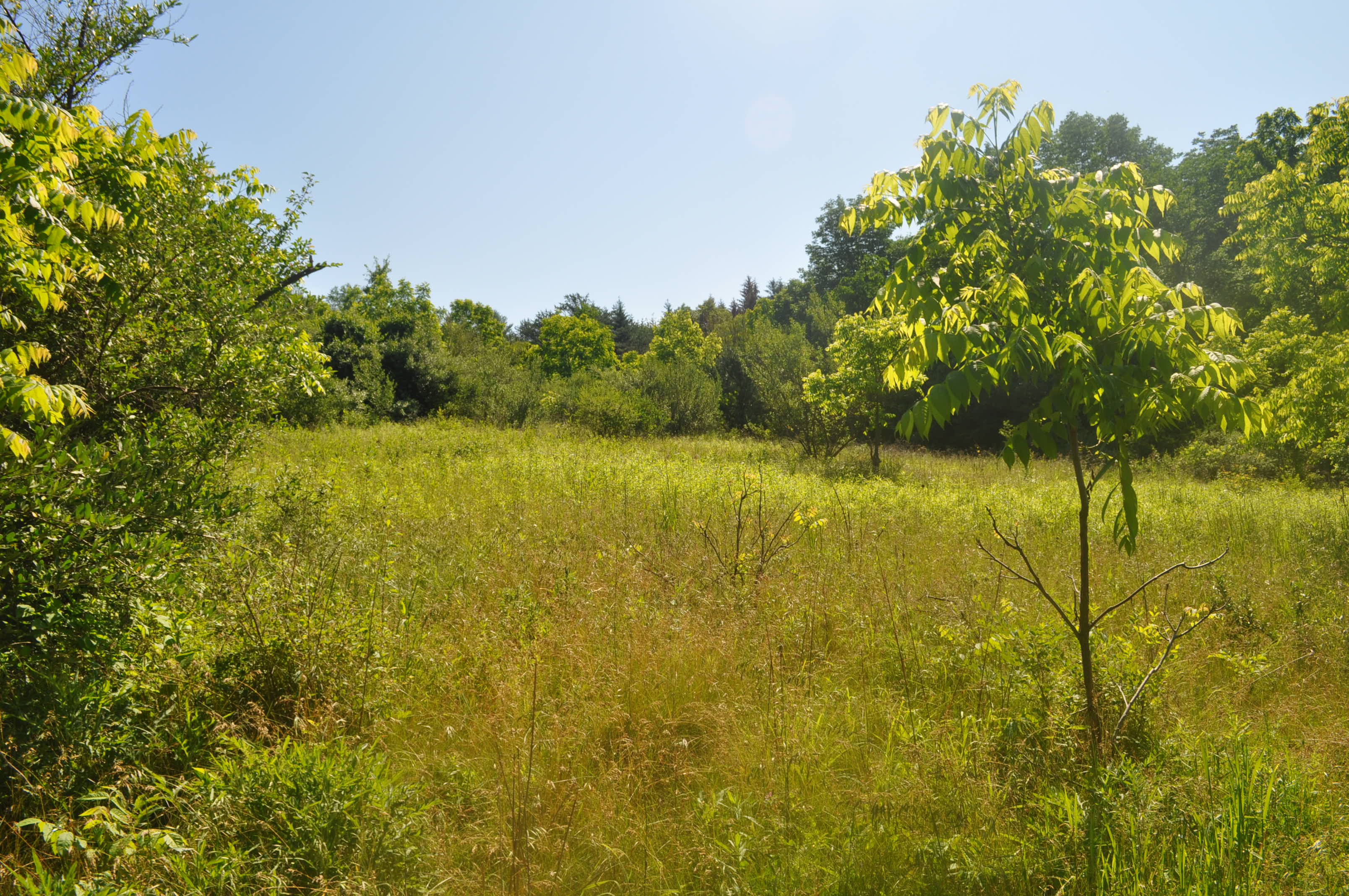
Site 5 of the Long-term Ecological Reflections Project (LTERP) at Shaver’s Creek is in the Bluebird Meadow, at the height of land along the Bluebird Trail. This field is perpetually in various stages of early successional habitat, depending on how many years have elapsed since the most recent clearing efforts.
For the next 100 years, writers, artists, musicians, children, students, and community members are invited to reflect on this and the seven other locations designated as part of the LTERP. This collection of reflections will provide an interesting and unique record over the next century so that future generations can better learn the story of this place.
Please enjoy these excerpts from several contributors to the project, and follow the links to read their full Creek Journals.
Scott Weidensaul, Author (2006)
Peaceful enough here when I return early the next morning, dew-wet but warming fast with the sun, meadow katydids already giving their stuttering, buzzy calls. I settle in, admiring the canvas of the meadow — the grasses and forbs, greens and ochres, splashes of color and muted pastels of late summer; the clumps of shrubs, the layers of taller seedlings and saplings around the margins, the textured blending of grassland and forest.
It’s such a tranquil and visually appealing spot that for quite a while, as I sit and jot random notes, it blocks a simple fact that should always be at the forefront of a naturalist’s mind when in such an ecosystem — the belated recognition that this meadow isn’t a peaceful tapestry, but a battleground, a tug-of-war between grass and tree, herbaceous and woody.
Ian Marshall, Author/LTERP Founder (2006)
This is the spot where, on the day I showed Scott Weidensaul the eco-reflection sites, we encountered the shirtless man catching insects, and I was so impressed that both Scott and the flycatcher could identify them all — robber-fly and so on. I often tell my students that knowing the names of things is the first step in becoming better acquainted with them, just as it is with the people we meet; if you don’t know their names, well, it’s hard to know them much at all. Not knowing the name of something in nature means you don’t have a label under which you can organize your observations of that thing. All that said, I am aware that I’m not very well-acquainted with much of this world I profess to love.
Katie Myers (2007)
The problem with research is, once you begin it takes over your point of view. I did not see any bluebirds in the Bluebird Meadow, so I became absorbed by the plants growing in the field. My research is about the dispersal of two species of invasive thistles in old fields, Carduus nutans and C. acanthoides, so I spend a lot of time in abandoned fields in the summer. Even in early spring the dead stalks of several well-known invasive species were evident: Japanese knotweed, spotted knapweed, and the remains of an invasive thistle.
Todd Davis (2008)
Dreaming the Dark Smell of Bear
Stop what you’re doing!
Put down your hammer and saw.
What good is a cabin?
Look at bear’s house: a hole
in the snow where great puffs of lung
rise through the roof of his dreaming.
For more information
For more information on the Long-term Ecological Reflections Project, or to learn how to contribute material, please email Doug Wentzel at djw105@psu.edu.
